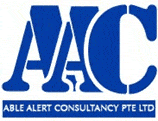14 Oct 2021
Speeches
Opening Address by Mr John Ng, Chairman,
Workplace Safety and Health Council at the
WSH Symposium on Cranes 2021 on
Thursday, 14 October 2021, 9:35am
Engineer Chua Cheng Hoon, Covering Chairman, Crane and Lifting Taskforce,
Distinguished speakers,
Industry partners and supporters,
Ladies and gentlemen.
1. Good morning and thank you for joining us at the WSH Symposium on Cranes 2021!
2. Today marks the tenth year of the Symposium, organised by the Workplace Safety and Health Council and supported by the Ministry of Manpower. Indeed, we have come a long way in bringing together the crane and lifting community to share best practices, latest technology and capability building developments, as well as health and well-being improvement initiatives.
WSH performance involving crane operations
3. We have made significant progress over the last decade, from 10 crane-related fatalities in 2009, to one fatality in 2019. Dangerous Occurrences (DO) have also been on a decline, with three DOs reported so far this year, compared to 12, eight and six DOs recorded in 2018, 2019 and 2020 respectively. I would like to commend the Crane and Lifting Taskforce for charting the various initiatives and programmes to strengthen WSH awareness and competencies for the crane and lifting community.
4. While the statistics showed that accidents have been on a downward trend, we must be cautious and not rest on our laurels but continue to maintain our good efforts.
WSH 2028 Journey for the Crane and Lifting community
5. COVID-19 has been with us for more than a year, and we have since adjusted and adapted ourselves to working amid the pandemic. Hence, the theme for this year’s Symposium is focused on safe lifting operations in workplaces and a healthy workforce as we live with COVID.
6. In this new normal, we must constantly remind ourselves the importance of WSH and our WSH 2028 vision that was set out three years ago. That is, to inculcate a healthy workforce in safe workplaces and for Singapore to be renowned for her best practices in workplace safety and health. We had set out three strategies then, which I will reiterate today:
Strengthen WSH Ownership
7. The first WSH 2028 Strategy is strengthening WSH ownership. Companies need to inculcate the right mindset and have a culture of care within the organisation, not just at the top level, but at all levels down to the last worker. Companies must not only want to be safe, but also know how to be safe.
8. To better equip lifting supervisors with the knowledge of safe lifting operations and drive industry ownership of WSH, the WSH Council is developing a “Lifting Supervisor Assessment Guide”. This Assessment Guide will supplement the WSQ Supervise Safe Lifting Operations (SSLO) course in enhancing the capabilities of lifting supervisors. It will be ready by the first quarter of 2022, so do look forward to that.
Enhance Focus on Workplace Health
9. Second is enhancing our focus on workplace health and mental well-being. Since the onset of the COVID-19 pandemic, much attention has been cast on this area. This is rightly so, as the work responsibilities of our crane operators are physically and mentally demanding. If not managed properly, there might be an adverse impact on their health, which could affect their proper conduct of the lifting operations. In a worst-case scenario, the consequences could be catastrophic.
10. It is therefore important for us to improve the health and mental well-being of our workers. Mr Alastair Tan from Wong Fong Academy will share with us later some useful tips on managing mental wellness and how that can translate to better WSH for workers.
Promote Technology-Enabled WSH
11. The final strategy is having an ecosystem where we could deepen industry capability and strengthen WSH training through technology-enabled WSH.
12. Over the years, we have seen more technologies and innovations aimed at improving WSH outcomes, such as the Stability Control System for lorry cranes, and data loggers for mobile and crawler cranes.
13. More and more companies are also leveraging technology as well, and one such company is the Port of Singapore Authority (PSA). They use predictive and visual analytics to enhance safety performance by predicting quay crane operators’ risk behaviour. In their presentation later, you will learn more about PSA’s automation and smart systems, as well as how PSA has built a reliable decision-support and triage tool for pre-emptive intervention to improve safe behaviour.
Conclusion
14. COVID-19 has changed the way we work, live and play. It is important for all of us to adapt to the evolving environment and have strong systems and processes in place for better safety and health outcomes. The Symposium today will share many important lessons and recommendations on safe lifting operations, and I urge you to take these back and implement them at your workplaces.
15. Let’s keep our workers safe and healthy. I wish you all the best in your company’s WSH efforts and hope you enjoy the rest of the Symposium. Thank you.
